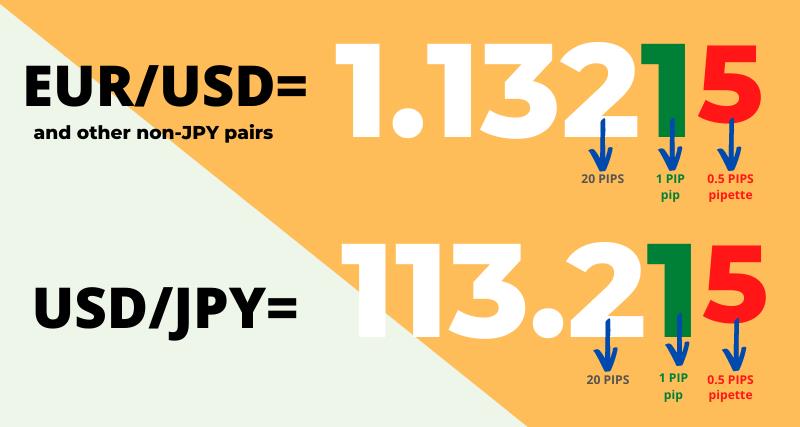Use our Pip Value Calculator to accurately calculate the pip value for forex pairs, indices, crypto currencies, and more, using live market quotes, account base currency, lot size and traded pair.
What are pips in forex?

A pip in forex means the smallest price change a currency pair can make, except for fractions of a pip or 'pipettes'.
For most currency pairs 1 pip is 0.0001; for currency pairs with the Japanese Yen, such as USD/JPY, 1 pip is 0.01. When trading metals, 1 pip for Gold and Silver is 0.01.
When the EUR/USD moves up from 1.0925 to 1.0926, the change is 1 pip. With 5-digit pricing, if the EUR/USD moves up from 1.09255 to 1.09260, the move would be half a pip.
How to use this pip calculator
Instrument: Traders can select from major forex crosses, minors, exotics, the most popular cryptocurrencies (such as ADA, BTC, ETH, LTC and XRP) and several commodities, including Gold, Silver and Oil. Let's choose for our example the EUR/USD.
Trade size: Forex pairs are 100,000 units per 1 lot, but units per 1 lot vary on non-forex pairs. In this field there's also the option of calculating the pip value based on the lots traded, or, the units traded. Let's choose, for our example, a trading size lot of 10,000 currency units (0.10 mini-lot).
Deposit currency: Pip values are different for each FX pair and for each cryptocurrency cross. Pip values are also subject to the current market/exchange quotes. Selecting an account currency in this field will enable an accurate calculation of the pip value, for the selected instrument, in a trader's account base currency (from AUD to ZAR). We choose EUR as our deposit currency.
Now, we hit the "Calculate" button.
The results: The pip calculator uses a market price live feed with the current interbank rate (in a 5-digit format) and it will display the current pip value based on the selected account base currency (in our example, the EUR).
So, the pip value for a 0.10 lot of EUR/USD, with a market rate of 1.21580, on a EUR trading account, is currently €0.8225.
Traders should note that for trading accounts in other base currencies, such as GBP or AUD, pip values can vary, depending on the current market rate for the GBP/USD, or AUD/USD, for example. The following conversion formula is applied to calculate the pip value in other currencies:
Pip Value = (One Pip / Exchange Rate) * Lot Size
The result would be:
Pip Value = (0.0001 / 1.21580) * 10,000 = €0.8225.





